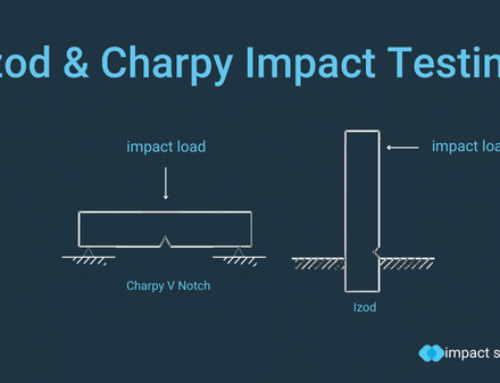It is without any doubt that plastics have been increasingly popular in material selection for plastic products and have found applications in engineering fields spanning from automotive to construction and from biomedicine to packaging of everyday healthcare products. The ease of processing, low cost of production and lightweight characteristics are just a few of the advantages of plastics when compared to other materials like metals, etc.
The thermal, mechanical, and physical properties of the plastics could vary significantly and can be tuned according to the application and the design needs. This is because plastics are made of long chains of hydrocarbons which are arranged in different configurations (molecular structure). The size, the type of hydrocarbons along with the chain architecture (crystallinity) would ultimately define the basic properties of the plastics.
For example, pure polypropylene (homopolymer PP), one of the most popular plastics, due to its high crystallinity shows very good tensile properties but yields relatively poor impact resistance. Polyethylene (PE) on the other hand shows exceptional impact resistance properties. Chemically mixing PE molecules in the PP formulation would result in a copolymer PP-PE, with a combined high tensile and impact performance. This material finds excellent use in automotive and plenty of other industries.
Apart from their main characteristics, the ultimate material properties of the plastics could also be adjusted by the use of different types of additives. In fact, additives made of organic and/or inorganic materials are present in almost all plastics. They are mainly used for colouring, providing protection from oxidation and UV radiation, improving processing (minimise friction during manufacturing), and protection against fire.
The finished plastic product is the outcome of compounding usually one or two different plastics along with different types and levels of additives depending on the application. As a result, it is becoming obvious that the characterisation of the plastic material and revealing all its components could become a rather complicated task. The origin of the additives which could be either organic, mineral, ceramic or metal along with the use of more than one polymer is the main reason why a series of different characterisation techniques should be applied.
The most common techniques used for revealing the identity of the finished plastic products are based on thermal analysis and spectroscopy. Materials would behave differently when subjected to different temperatures. Also, due to their molecular structure and orientation, individual components and spectroscopic techniques use a range of principles to reveal the chemical composition, composition variation, crystal structure, and photoelectric properties of materials. Below, we will be presenting two examples of how simple techniques could be applied in order to characterise plastic materials and reveal their formulation.
An automotive part manufacturer ordered a batch of moulded PP-based plastic products from overseas and wanted to make sure the product had a high-impact PE in it. Thus, a full material analysis was performed including infrared spectroscopy. Every plastic holds its own characteristic fingerprint feedback (Spectrum) when scanned with infrared radiation. The method is called Fourier-transformed infrared spectroscopy (FTIR). In this case, as shown in Figure 1 below, FTIR analysis showed the basic fingerprint of PP along with secondary traces of PE. These traces were evident at the 2840 cm-1 area at the infrared spectra (Figure 1). As a result, through this simple test, it was revealed that the plastic is a high-impact PP, blended with PE molecules.

Figure 1. FTIR spectra and the FTIR unit (onset)
Furthermore, a large construction company required the use of specific fire-resistant polypropylene materials used in the cladding and wanted to check whether the material, provided by their supplier, met their requirements. For this reason, the specimens taken from the cladding panel were studied using infrared spectroscopy coupled with a thermogravimetric analysis machine (TG-IR). In simple words, the part was subjected to high temperatures (TGA) up to 900 C and all the gases evolved from the decomposition were transferred into the FTIR unit via a special heated transfer line as shown in Figure 2 below. The TG-IR (polymer characterisation technique: TGA – FTIR) is a very powerful technique, it provides full qualitative and quantitative material analysis and it is often used for material qualification, additive identification, efficiency, reverse engineering, failure analysis, batch-to-batch variations and identification of harmful or regulated compounds.

Figure 2. The TG-IR apparatus
In our case, the TG thermogram of the plastic specimen showed two main weight losses, one at 33 min or at 360 °C and one at 44 min or 468 °C as shown in Figure 3 below. Analysis of the evolved gases at around 33 and 44 minutes via the FTIR revealed that the plastic part mainly consisted of ammonia, phosphates, and polypropylene.
As a result, from the TG-IR test, we have concluded that the plastic cladding is made of PP material filled with ammonium polyphosphate additives to give fire protection. The level of ammonium polyphosphates in the mix was approx. 4.5% per weight.

Figure 3. TGA thermogram

Figure 4. IR spectrum obtained from the evolved gases at 35 minutes or approx. 370 °C
In conclusion, herein we have demonstrated two simple methods based on thermal and infrared analysis to reveal the identity and chemical formulation of plastic products. We have shown how FTIR in solid state and coupled TGA-FTIR methods can help plastic manufacturers and end product users understand what their parts are made of. With the increasing use of plastic in our daily life and with the plastics finding application in more demanding areas increases, even more, the need for strict quality control and assurance measures to produce safe, environmentally friendly, and efficient products.
The strong background and knowledge in materials combined with the latest technology equipment make Impact Solutions a leader in R&D of materials, as well as quality assurance and control. Should you have any further questions about our polymer characterisation techniques: TGA – FTIR (TG-IR) or any other tests, such as the identity of plastic products, do contact us today, or follow us on social media channels: Facebook, LinkedIn and Twitter.





